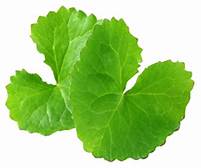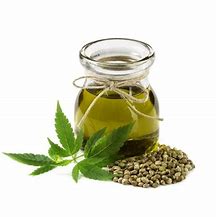Hydrocotyle Oil (macerated)




Hydrocotyle Oil (macerated)
- Latin name
Centella asiatica, Hydrocotyle asiatica - Family: Apiaceae (Umbelliferae)
Also known as Indian pennywort, tiger grass and gotu kola- The Plant
One of about twenty species of low growing perennials, Centella asiatica is a perennial herb found in India and islands in the Indian ocean from Madgascar to Indonesia. - The plant has small kidney shaped leaves up to 5cm (2 inches) across with indented margins on long running stems and has umbels having very small pink flowers soprne beneath the foliage in the summer.
- Height is 15-20 cm (6-8 inches). It is known to contain an essential oil but this is not extracted. Hydrocotyle resembles the related European marsh pennywort (Hydrocotyle vulgaris) in appearance.
- The Oil
A macerated oil is available; sweet almond oil is normally used as a base.
- Folk-lore and Traditional Plant Uses
Used in India since antiquity to treat dermatitis, to aid the healing of superficial wounds (this healing property is now thought to be associated with asiaticoside) and for care of the skin.- Centella extracts are used topically in the treatment of surgical wounds and minor burns, and as a complementary treatment of leg ulcers of venous origin because it improves circulation of the lower limbs.
Orally it is used to relieve symptoms of venous and lymphatic insufficiency (Bruneton 1995). It is thought that this oil stimulates regeneration of the skin and loss of elasticity.- It has long been used to aid meditation in India and has been used both there and in Africa for leprosy (Bown 1995) and entered into the French pharmacopoeia via Madagascar. Indian pennywort oil has a reputation for longevity and for treating cellulite.
Reference: Carrier Oils For Aromatherapy & Massage: Len Price with Ian Smith & Shirley Price
Articles-Most Read
- Home
- Contact Us
- Coconut Oil-2
- Absorption Ratings for Carrier Oils
- Cold Pressing Method
- What are Essential Fatty Acids
- Cherry Kernel Oil
- Fixed Oils and Skin Penetration
- Hempseed Oil
- Almond Oil
- Cocoa butter
- Camelina Oil
- Coconut Oil
- Antibacterial Effects Of Carrier Oil
- Lime Blossom Oil (macerated)
- Carrot Oil, Wild Carrot Oil (macerated)
- Apricot Kernel Oil
- Kukui Nut Oil
- Jojoba Wax
- Pumkin Seed Oil - Cucurbita maxima, C. pepo
- Passion Flower OIl (Macerated)
- Hydrocotyle Oil (macerated)
- Rapeseed Oil - Carrier Oil
- Palm Kernel Oil
- Nutrients
Who's On Line
We have 17 guests and no members online
Articles-Latest
- How to Make Homemade Olive Oil: A Step-by-Step Guide
- 20 Evidence-Based Aloe Vera Oil Benefits For Skin, Hair & Health
- Peanut oil - Cold pressed - Are There Health Benefits? How To Make
- What Are the Health Benefits of Black Seed Oil?
- Comfrey oil Infused
- Chamomile Flowers Infused Oil
- Calendula Flowers Infused Oil
- Arnica Flowers Infused Oil
- How To Make Herb-Infused Oils
- DIY avocado oil for healthy skin
- How To Make Coconut Oil
- 8 Benefits of Mustard Oil, Plus How to Use It
- SHOREA STENOPTERA SEED BUTTER
- Shea Butter- 7 Amazing Benefits Of Shea Butter
- Monoi Oil For Hair & Skin
- Mango Seed Oil
- Cohune Oil Is The Next Big Thing
- Brazil Nut OIl
- 7 Impressive Benefits Of Allspice
- Camelina Oil Benefits, Uses, and Side Effects




